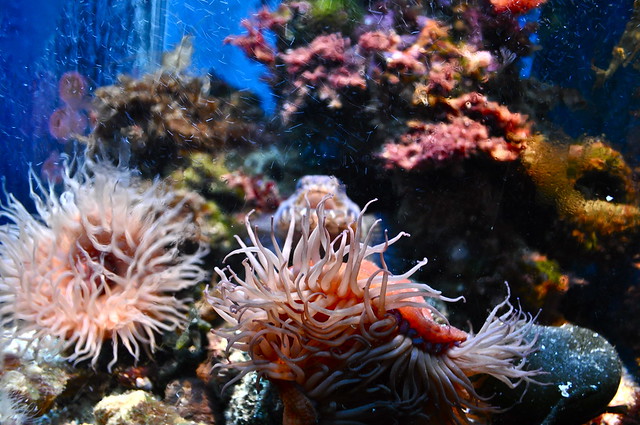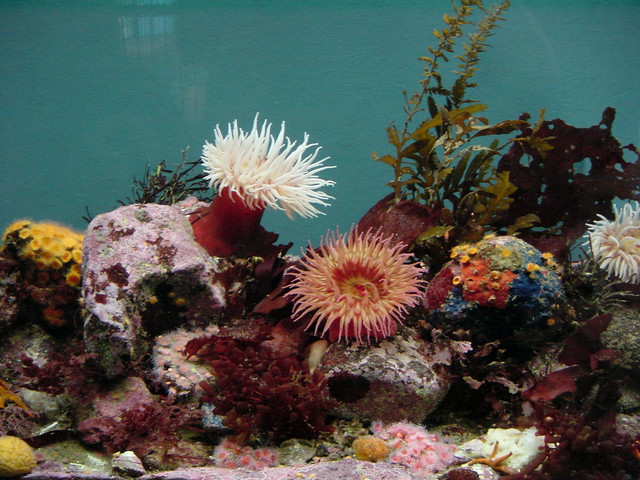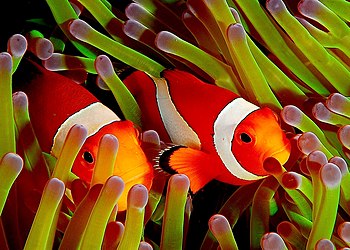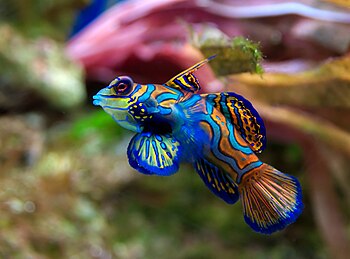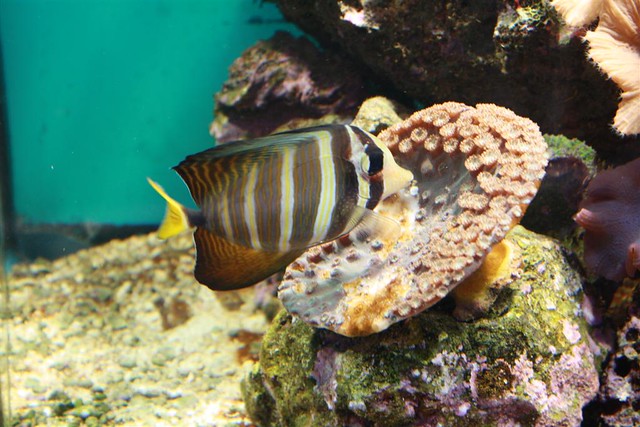 |
| Specimen of Acanthastrea lordhowensis (Photo credit: Wikipedia) |
When shopping for fish, it might be tempting to pick the rare and fancy fish full of colors, and exotic looking shrimp or crustaceans. An aquarium full of marine life complete with a coral reef and aquatic plants is very appealing. After all, who wouldn't want to have an underwater paradise in their living room? It may, not, however, be the best choice for a beginning hobbyist.
Coral reef aquariums require much more care than freshwater tanks or saltwater fish only tanks. Freshwater fish are usually hardier than marine species and therefore a little more forgiving when it comes to water acclimation. It is recommended that only experienced fish keepers with a real commitment to the hobby attempt a coral reef aquarium. A tank containing coral reef life may require several months of cycling before getting the water just right. The water in a coral reef tank must be regulated for lighting, temperature, and ph. Start with tap water and then add a sea salt mix to the water. This type of solution is available at most pet stores.
Coral reef aquariums require much more care than freshwater tanks or saltwater fish only tanks. Freshwater fish are usually hardier than marine species and therefore a little more forgiving when it comes to water acclimation. It is recommended that only experienced fish keepers with a real commitment to the hobby attempt a coral reef aquarium. A tank containing coral reef life may require several months of cycling before getting the water just right. The water in a coral reef tank must be regulated for lighting, temperature, and ph. Start with tap water and then add a sea salt mix to the water. This type of solution is available at most pet stores.
The salinity of the tank should be between 1.023 and 1.004. The ideal temperature for a marine aquarium is between 75 and 79 degrees Fahrenheit. It is also important to test the P.H. of the tank. Ideal P.H. is somewhere between 8.3 and 8.4. Test kits can be purchased online or at your local pet store. The same store will also carry any solutions necessary to adjust the P. H. There is not much wiggle room when it comes to these specific starting points. In order to avoid a costly mistake, it is important to be patient, watch the tank closely, and make sure that you don't introduce any marine life until the tank is absolutely ready.
Once the aquarium is ready, start with anemones and clownfish. They are the hardiest of reef species, and who wouldn't love to have Nemo swimming around in their living room? Monitor the marine life closely. Check the activity levels of the fish, and watch for stress. Stress is the most common cause of sickness in fish. Remember that these creatures may have come directly from the ocean, and it may take a while for them to get acclimated to their new home. Another cause of stress in fish is overcrowding. Make sure there allow about ten gallons of water per one inch of fish. Account for the full grown size of the fish, not the size of fish when it is purchased.
The incubation period for most sickness in fish is about thirty days. So after about a month, if all is well with the tank and the fish seem to be adjusting well, then it is okay to introduce some new marine life. A mandarin fish or a dwarf angelfish might round out the collection nicely, and they are fairly compatible clownfish.
Whenever adding new fish, choose the species carefully for compatibility. The fish should be compatible with water specifics, but also make sure that their food source is compatible. Always remember to be patient when adding new fish. Give the existing tank members plenty of time to get adjusted before making additions to an aquarium. The best piece of advice is to do research. Make sure that all new purchases will be suitable tank mates for the existing creatures. With a little luck, and a lot of skill you will be on your way to having a reef aquarium that will impress any fishkeeper.
Whenever adding new fish, choose the species carefully for compatibility. The fish should be compatible with water specifics, but also make sure that their food source is compatible. Always remember to be patient when adding new fish. Give the existing tank members plenty of time to get adjusted before making additions to an aquarium. The best piece of advice is to do research. Make sure that all new purchases will be suitable tank mates for the existing creatures. With a little luck, and a lot of skill you will be on your way to having a reef aquarium that will impress any fishkeeper.


